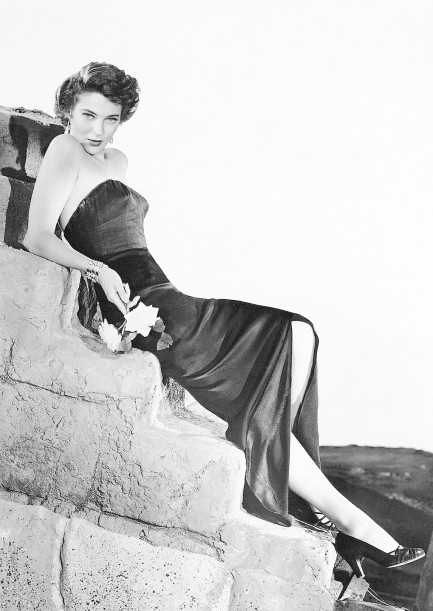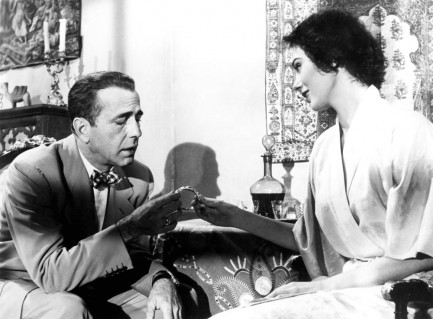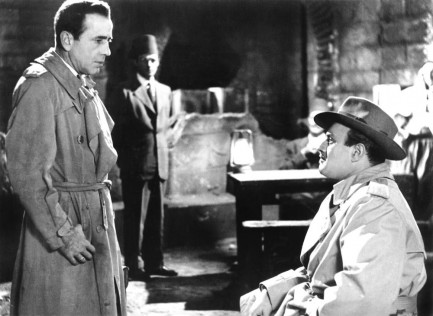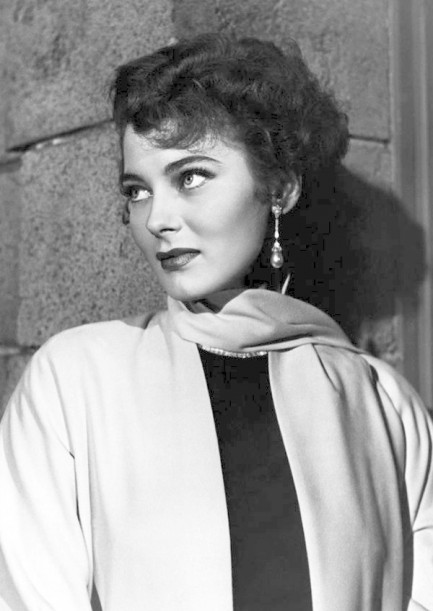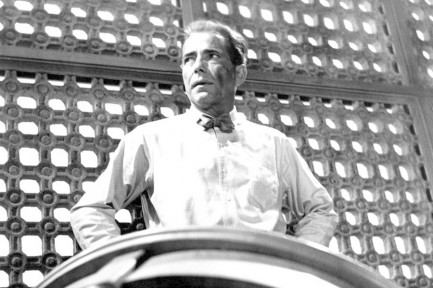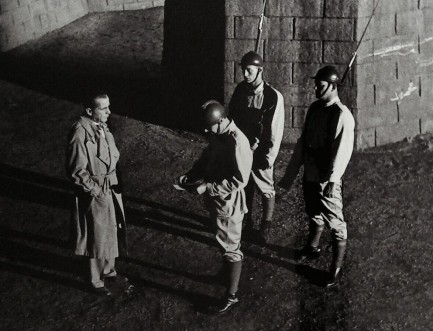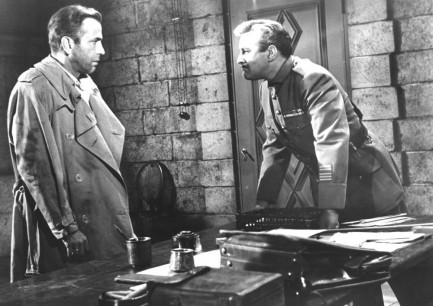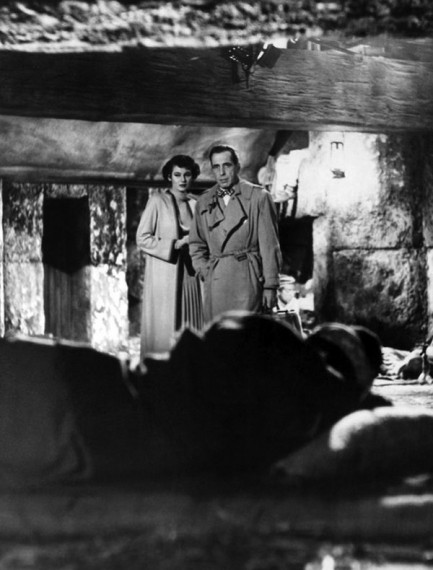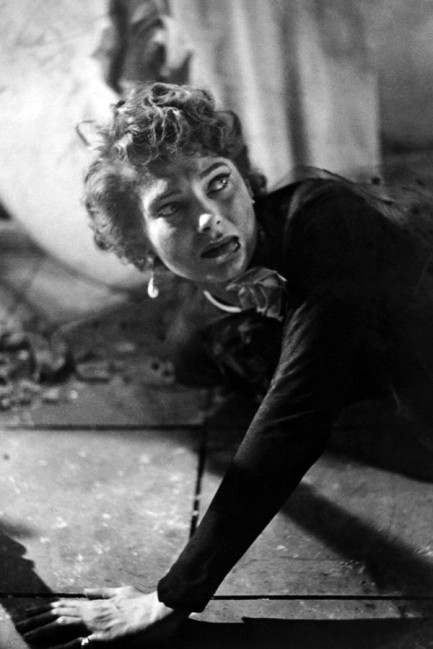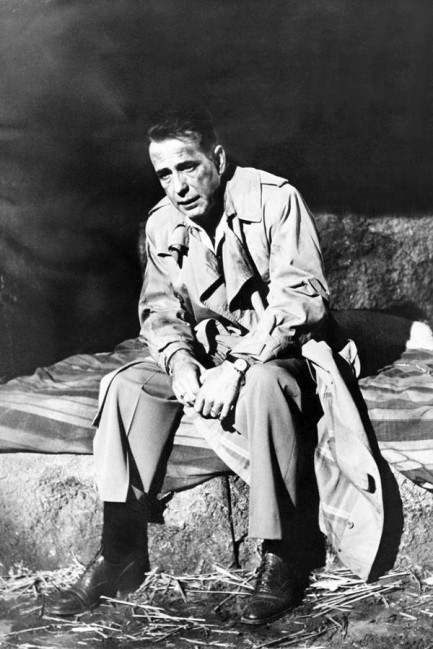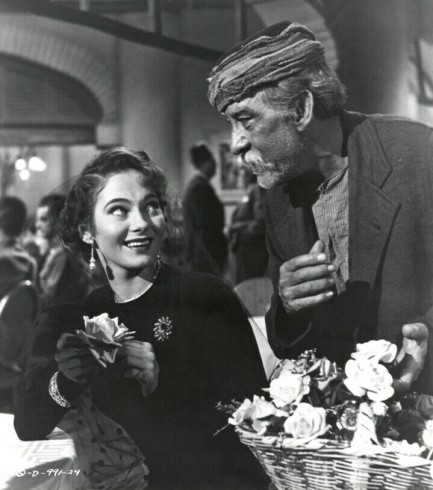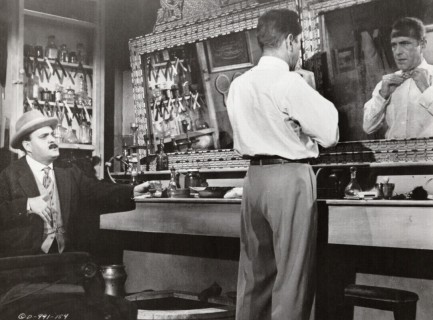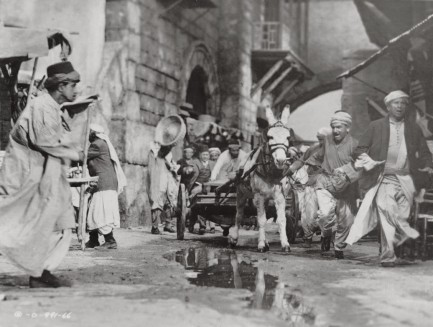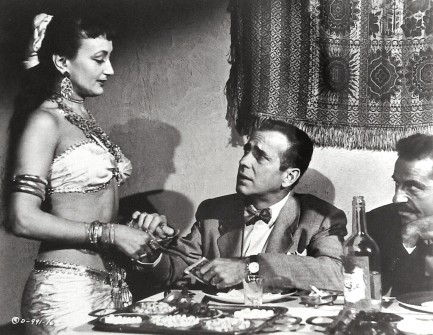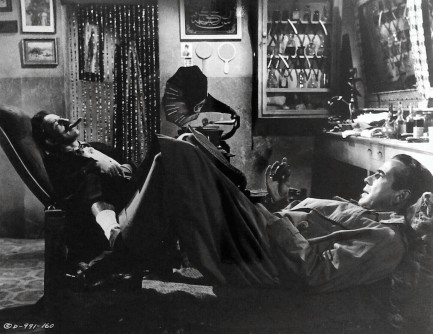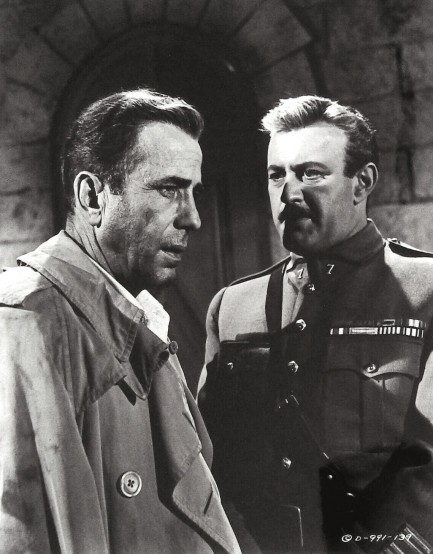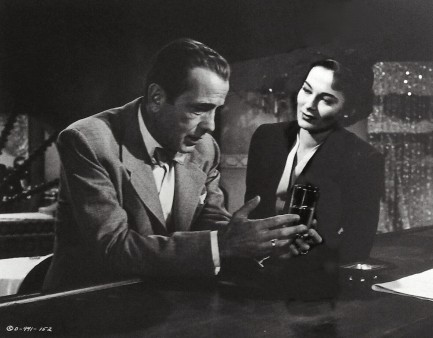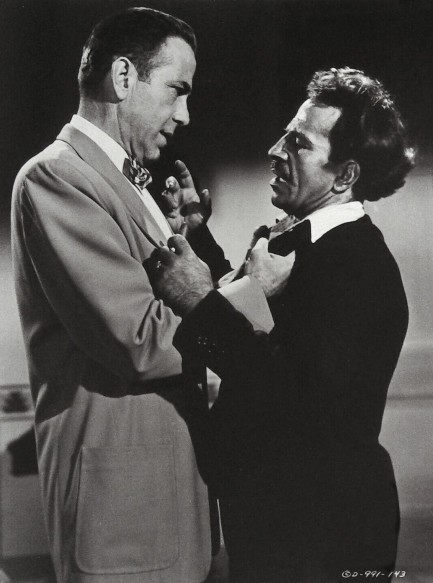| Vintage Pulp | Sep 19 2021 |

Casablanca drifts 2,500 miles east and loses a little something along the way.
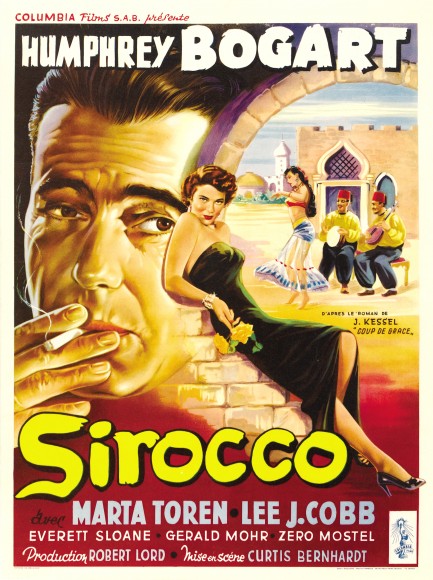
Above you see a nice French poster for the Humphrey Bogart adventure Sirocco, which we touched upon briefly several months back. As we noted then, Columbia Pictures promoted the film as being, “beyond Casablanca...” but Sirocco comes up short in that department. How could it not? It's like saying, “beyond chocolate chip cookie dough ice cream,” or “beyond a raspberry gin Ricky,” or “beyond the 2003 Hurricanes-Buckeyes NCAA Championship Game.” These things are not possible. But Sirocco is actually pretty good anyway, owing largely to its setting in 1925 Damascus, Syria (the film was actually shot in Yuma, Arizona, but the illusion worked adequately).
Plotwise, local independence fighters are trying to drive out French occupiers via any means deemed necessary, including what we call today terrorist bombings. Bogart plays Rick from Casablanca, except he's named Harry Smith. But he's the same cynical, opportunistic, womanizing lone wolf he was before, who instead of running a bar, runs guns. He has no ideology in his profession, except love of money, and will work for whoever can hire him, Syrian or French. As the situation in Damascus grows increasingly fraught he finds himself unwillingly stuck between the locals and the occupiers. He also finds himself in a love triangle with slinky Märta Torén and a French military officer played by Lee J. Cobb.
The movie quickly coalesces around what we like to think of as the big three Bogart plot devices: romantic feelings threaten to upset his hard-won cynicism, he must make a choice between desire and conscience, and he must beat the clock if he hopes to get out of Dodge with his skin intact. Beyond Casablanca? Columbia pretty much strip mined Casablanca, is what happened. Even so, Bogart had few serious misses in his career, and Sirocco isn't one of them. Fans will get to see him doing exactly what made him an icon, and for that reason alone we think it's worth a watch. After premiering in the U.S. in mid-1951, it opened in France today the same year.
